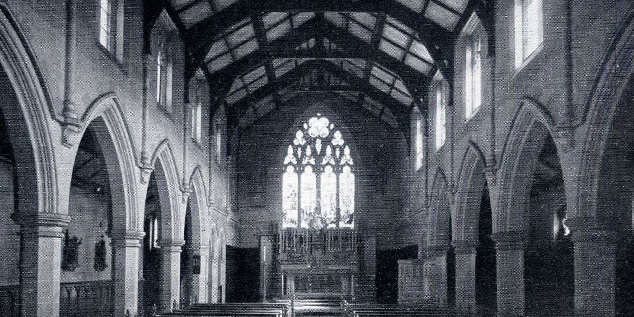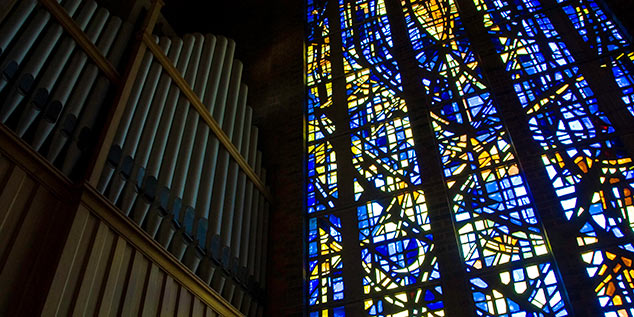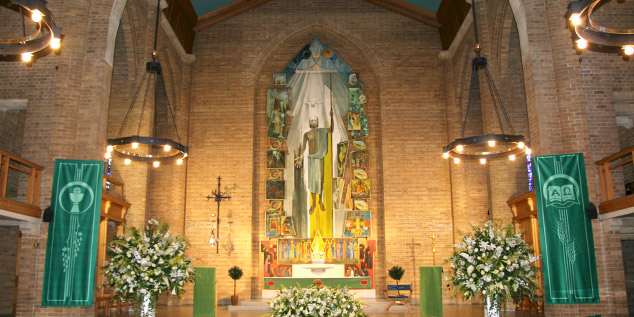Looking across the Piazza no-one can fail to see the Chapel looming large which was built on top of the College library in 1962-63. This is the second chapel on the site, the first having been originally built between the entrance and the Waldegrave Drawing Room, now only partially visible in the drama studios.
The new chapel was designed by Sir Albert Richardson (1880-1964). The design of impressive plain brick walls was influenced by the medieval Albi Cathedral, a popular model in the nineteenth and early twentieth centuries for brick churches.

The chapel's construction marked the end of a long and distinguished tradition of church building prior to the Second Vatican Council and the changes in the liturgy. The cost was £104,000 (approximately £1.7 million in today's money) which reflected its scale and ambition of the time. Richardson represents the lesser known tradition of modern architects who worked within the tradition canon of classical and gothic ecclesiastical architecture. The 1960s was a high point of Catholicism in this country and elsewhere and the building reflects this confidence. Today the church might not be as busy as before but Richardson has created an interior that is conducive to liturgy and private prayer.
The windows are rightly famous as they contain stained glass by the studios of Gabriel Loire, master glazier of Chartres Cathedral who created his windows using a delle verre technique of pouring red hot lead into the cracks between the already formed pieces of glass. The fifteen mysteries of the Rosary form the iconographic programme for the windows and they create an impressive abstract ensemble strong in blues and reds, with contrasting windows of blue and yellow facing the piazza.
Find out more about the Chapel windows

The projecting spiral staircase linking the chapel with the crypt below is glazed with stained glass by Layers and Westlake, signed and dated 1901, from an unknown original location. Another of the chapel's distinctive features is its reredos set behind the marble altar and steps, painted by Constance Stubbs.

During the Papal visit of 2010 St Mary's was fortunate to be chosen as the location for the Holy Father’s meeting with religious congregations, school children, teachers and academics. This was an immense privilege for the University.
The Pope began his visit praying with representatives of religious congregations, including those who have a charism for education and the history of education, in the University Chapel (see video below).
The Pope paid tribute to the outstanding contribution made by religious orders to education in the United Kingdom. He spoke of his "deep appreciation for all the dedicated men and women who devote themselves to teaching the young people." The Holy Father’s words were filled with gratitude for the work of religion especially in education.
He spoke about the work of Mary Ward (foundress of the Institute of the Blessed Virgin Mary whom he declared 'venerable' in 2009) and said: "I myself as a young boy was taught by the English ladies and I owe them a deep debt of gratitude."
The Holy Father went on to say that: "The life of the faith can only be effectively nurtured when the prevailing atmosphere is one of respectful and affectionate trust." He said that he prayed this may continue to be a ‘hallmark’ of Catholic schools in the country.
Pope Benedict presented the University with a mosaic picture depicting the Madonna del Popolo which is taken from an ancient Byzantine icon venerated in the Church of Santa Maria del Popolo in Rome. The mosaic picture was produced by the experts of the Vatican mosaic studio in 1991 and may be found on the left hand aisle wall in the Chapel.